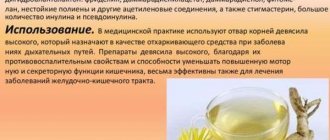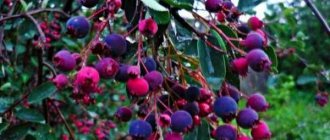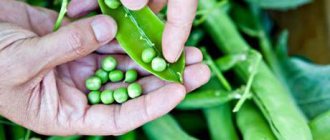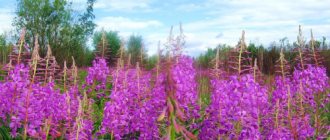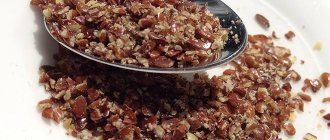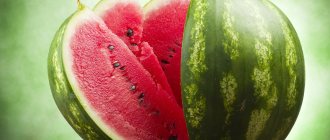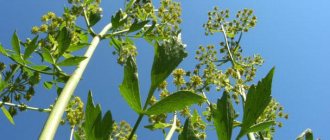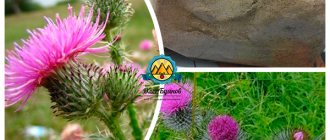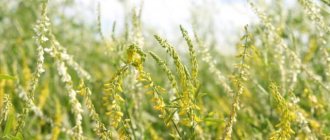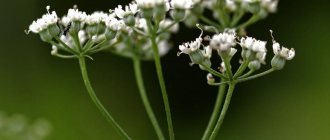Description of the plant
Elecampane (Inula) is a grass that prefers habitat in areas of wet meadows and lake shores. You can also meet it on the edges of deciduous forests.
The plant cannot be called short, because it can reach a height of 180 cm. It is for this reason that it is difficult not to notice among other grass.
What does elecampane look like? It has large leaves on a thick, erect stem. Its entire surface is covered with thick whitish fluff. The leaf blades of the plant have unequally jagged edges. At the roots they are transformed into petiole parts of elliptical shoots.
Elecampane basket-tassels are edged with leaves in the form of wrappers. The bright yellow flowers of the grass can be divided into two types. At the edges they have the shape of a tongue, and the middle tubular ones are equipped with five teeth.
The rhizome of elecampane with shoots has a thick and fleshy structure. Its upper part is covered with a brown film. The inside of the rhizome is yellowish in color.
Elecampane blooms in mid-summer. At the beginning of autumn, its fruit ripens in the form of an achene with a diameter of 5 mm. Its main distinguishing feature is the presence of a long crest.
One of the species of this genus is the most popular - elecampane: this is the most popular species, which has medicinal properties
Varieties of elecampane
- Elecampane British - a low plant (20-60 cm) with a straight stem covered with hairs and a thin rhizome. Blooms in summer and autumn. Grows in coastal bushes.
Stems, flower baskets and leaves are used for medicinal purposes. The grass is harvested in dry, sunny weather during flowering. At this time, the leaves accumulate the most useful substances, and the flowers crumble less during drying.Dry the above-ground part of the elecampane outdoors in the shade, stirring occasionally.
- German elecampane is a perennial plant up to 45 cm high with a fluffy stem, found in the steppes, meadows, forest edges and rocky slopes.
Blooms in summer. For medicinal purposes, the entire above-ground part is harvested during flowering. - Elecampane is a perennial plant with a straight stem, hard leaves and creeping rhizome.
Found in forest belts, meadows and bushes. Blooms from June to August. The stems, leaves and flowers have medicinal properties. They are harvested during flowering. - Elecampane splayed is a biennial plant with a fluffy branched stem.
Grows in forests, meadows, along river banks. Blooms in June-July. The above-ground part of the plant has medicinal properties. It is harvested during flowering. - Elecampane is a perennial plant with rough leaves that grows along river banks, in gardens, forests and steppes. Blooms in June-July. Leaves, flowers and stems are harvested during flowering.
- The Japanese elecampane is found only on the Kuril Islands and Primorye. Both the herb and the roots are used for medicinal purposes.
But harvesters pay special attention to tall elecampane.
Habitat
The territory in which the elecampane feels comfortable is quite extensive. It grows in Eurasia and Africa. With such a wide range, it is possible to meet elecampane in the Chinese and Mongolian expanses.
They are very familiar with it in Western Siberia, Altai and the Middle East. It also pleases the inhabitants of the Caucasus with its sunny petals. Elecampane looks especially impressive against the backdrop of mountain streams.
Regions of distribution on the map of Russia
Chemical composition
The general composition of the plant in accordance with the actual content to the daily norm (/) for humans:
- calcium - 4.5 mg/1 g;
- magnesium - 1 mg/0.4 g;
- sodium - 0.9 mg/1.3 g;
- sulfur - 1 mg/1 g;
- chlorine - 1.4 mg/2.3 g;
- iron - 0.001 mg/18 mg;
- manganese - 0.0016 mg/2 mg;
- copper - 0.6 μg/1000 μg;
- fluoride - 100 mcg/4000 mcg.
The main components of the ground part of the elecampane:
- Plant polyphenols (flavonoids). They are necessary to stabilize the nervous system and strengthen the walls of blood capillaries.
- Essential oils. When creating the aroma of a plant, they perform an additional function in the form of attracting the attention of pollinating insects.
- Tannins. Their main feature is the ability to reduce the secretory activity of the gastrointestinal tract.
- Organic acids. Fumaric acid promotes carbohydrate metabolism, acetic acid promotes the metabolic process, propionic acid promotes glyconeogenesis in the liver.
- Complex organic compounds. Ascorbic acid (vitamin C) is essential for immune protection, and tocopherol (vitamin E) is essential as an antioxidant.
Elecampane roots contain:
- Inulin. This polysaccharide is considered a natural prebiotic that has a beneficial effect on the condition of the large intestine.
- Alkoloids. We are talking about effective antispasmodics with a wide spectrum of action.
- Saponins. The activity of hormones without their assistance is significantly reduced.
- Slime. For enveloping the walls of the stomach and protecting it, it has no equal.
- Gum. If there is excess cholesterol in the body, you cannot do without this component.
Elecampane's roots
Composition of elecampane
It is believed that this medicinal herb, or rather its root, cures nine diseases, and this is not an exaggeration, because the range of indications for the use of this plant is quite wide. Elecampane exhibits its medicinal properties due to the presence of the following components:
- Inulin and inulenin, which are polysaccharides and are involved in immune processes.
- Saponins that enhance bronchial secretion and regulate metabolic processes.
- Resins with a bactericidal effect.
- Mucus that has an astringent and anti-inflammatory effect.
- Acetic and benzoic acids, which are natural antiseptics.
- Alkaloids that have analgesic, antispasmodic and sedative effects.
- Vitamins that help improve immunity.
- Essential oils for potency with bactericidal and antiseptic effects.
- Manganese, potassium, calcium and other trace elements.
- Flavonoids that strengthen blood capillaries.
- Pectin, which normalizes cholesterol levels and removes harmful substances from the intestines.
Elecampane also contains tannins, bitterness, carboxylic acids and other components.
Healing effect
The beneficial properties of elecampane can be summarized point by point:
- relieves inflammatory processes and participates in skin regeneration;
- has a laxative effect for prolonged constipation;
- helps with colds and bronchitis as an expectorant;
- participates in blocking bleeding, both internal and external;
- helps normalize blood sugar levels in humans;
- has a choleretic and diuretic effect.
Dosage forms of drugs
Drugs containing elecampane are prescribed for accompanying therapy for:
- oncological diseases;
- metabolic disorders in the body;
- joint problems;
- pinched sciatic nerve;
- low hemoglobin.
List of known drugs:
- "Elecampane P" (Russia). One hundred tablets of a natural remedy are prescribed for colds, bile stagnation and stomach cramps. Elecampane cryopowder is supplemented with vitamin C.
- "Elecampane" (Ukraine). It is produced in the form of filter bags of 4 g each. It consists of rhizomes and roots of elecampane. The drug is prescribed for coughs and colds.
- “Elecampane” with bear bile (Russia). The release form of the drug is a cream-balm in an aluminum tube. It is used to treat joints, relieve swelling and pain in their area.
- “Elecampane-syrup” fortified (Kazakhstan). Each bottle contains 125 ml of cold remedy. It contains roots and rhizomes of elecampane, vitamin C and rose hips.
- Cream-balm “Folk Healer” (Russia). It is used for psoriasis and lichen. After water procedures, the cream is applied to problem areas of the body.
Elecampane: medicinal properties
Let's look at the medicinal properties of products that contain elecampane:
- When coughing. It helps to cope well with a cough that has developed against the background of a cold, acute respiratory viral infection, bronchitis, pneumonia. It is prescribed as an expectorant. In addition, elecampane herb is effective in the treatment of obsessive whooping cough syndrome (and against the background of asthma), as it has an antispasmodic effect. Elecampane root, its foliage and flowers are often present as an ingredient in breast preparations. The plant is also a diaphoretic, which is why decoctions with it are recommended at high temperatures.
- Digestive problems. Elecampane is indicated if a person complains of belching, digestive system disorders in the form of diarrhea and constipation, gastric and duodenal ulcers, hemorrhoids, intestinal colic, infection with worms, bloating, hepatitis. Elecampane herb helps stimulate liver, gastric, intestinal functions, and also normalizes the functioning of the pancreas, and eliminates pain in the gastrointestinal tract. In addition, products based on elecampane root help improve digestive function and stimulate appetite.
- Problems with the endocrine system. The plant helps stimulate metabolic processes in the body, which is why people suffering from diabetes take it.
- Blood diseases and cancer. The use of elecampane is indicated for patients who suffer from anemia and oncology in the form of infusions for long-term therapy.
- Problems with the urinary system. Elecampane has a weak diuretic effect, it is indicated for use against the background of urine retention, kidney pathologies and bladder problems. The plant is used as an adjuvant in diuretic preparations, and not as an independent treatment.
- Pathologies of rheumatic nature. With arthritis, gout, rheumatism, and inflammation in the nerves, pain in the muscles and joints often appears. Elecampane rhizome has an analgesic effect. For joint and muscle pain syndrome, remedies with this herb are indicated for oral use and external use as a compress on the affected area.
- Vascular pathologies. Elecampane helps cope well with headaches, vascular spasms, and high blood pressure.
- Elecampane for outdoor use. Elecampane herb is useful for atopic dermatitis, eczema, scabies, and lichen. The plant is a natural antiseptic, thanks to which it copes well with purulent wounds, trophic lesions, bedsores, and boils. To eliminate pain, hyperemia and irritation, you can use lotions, baths, ointments and compresses based on elecampane. In addition, to stop the bleeding, you can apply a fresh leaf of the plant to the wound.
Elecampane is an excellent tonic. It can be taken for preventive purposes in winter to strengthen the body's defenses.
use of elecampane, properties of elecampane
Application
The tall, bright plant has a wide range of uses. What it looks like in practice is worth considering.
In gynecology
For women's problems, only the attending physician can prescribe elecampane. Preparations based on it are recommended in the following cases:
- problems with conception;
- uterine prolapse;
- painful menstruation;
- disruptions in the female cycle.
If you need to reduce lactation, then women should use the tincture to wean the baby from the breast.
Elecampane for men
In a family where there are no children, the woman is not always to blame. For men with problems with reproduction, a remedy made from elecampane has been developed. The infusion is prepared at the rate of 3 tbsp. l. dried roots per 0.5 liters of boiling water. The exposure time of the product is 20 minutes.
You need to take elecampane for men every two hours, 1 tbsp. l. within a couple of weeks. Then you should take a break for 15 days. After it, you need to take the infusion of elecampane according to the same scheme.
In cosmetology
The herb can be used for young and mature skin. It is also suitable for caring for the entire body.
Finished products:
- Face cream. In the “Magic Alatai” series from “Health Compass” (Novosibirsk), the product without silicones contains elecampane, vitamins E and C, as well as 11 oils. The bottle is equipped with a pump dispenser.
- Hair lotions. As a finished product, it is worth taking a closer look at the restorative infusion from “Secrets of Grandma Agafya” (Russia). Product description: alcohol-free lotion based on elecampane, black alder cones, lungwort and milk thistle. Returns shine to weakened curls with split ends.
- Hair shampoos. The stronger sex will like the “Masculine character” remedy made from elecampane, horsetail and nettle from KLEONA (Russia).
Masculine shampoo from kleona from elecampane
Methods of application
Folk remedies based on elecampane allow you to reveal all the positive properties. Let's look at the most popular recipes:
Infusion
Required:
- 1 tsp. ground elecampane root;
- 200 ml water.
Cooking instructions:
- Pour the powder with water.
- Leave for about 8-12 hours. It is better to use a glass container with a lid.
- Mix well and strain.
The infusion should be drunk 50 ml 4 times a day (20 minutes before meals). The product is used to treat diseases of the digestive system, combat cold symptoms and strengthen the immune system.
Tincture
Need to:
- 1 tbsp. l. elecampane root;
- 500 ml vodka.
Recipe:
- Pour dry raw materials into a glass bottle.
- Pour in alcohol and mix well. Close with a tight lid.
- Place in a cool, dark place for 14 days. It is recommended to shake the container every 3-5 days.
Take elecampane tincture 10 drops 2 times a day (before meals). It stimulates appetite and facilitates digestion, promotes weight loss. The product can relieve joint pain due to arthritis and arthrosis.
External use of the tincture is also allowed (for diseases of the musculoskeletal system).
Decoction
What you will need:
- 1 tbsp. l. chopped root;
- 200 ml boiling water.
How to do:
- Brew raw materials with boiling water. Place in a water bath.
- Keep on low heat for 7-10 minutes.
- Let it brew for at least 2 hours. Strain.
Drink elecampane decoction 30-40 ml 2 times a day (before meals). It is effective for respiratory diseases. To combat age spots and treat psoriasis, you can make lotions.
Tea
Components:
- 1 tsp ground elecampane root;
- 200 ml boiling water.
Recipe:
- Pour boiling water over the raw materials.
- Brew for about 15 minutes. You need to stir occasionally.
- Strain.
Drink 1 glass of tea 1-2 times a day (after meals - 20-40 minutes). Elecampane is in perfect harmony with other herbs from which you can prepare a collection (St. John's wort - 1 tsp; birch buds - 1 tsp; thyme - 1 tbsp). It is better to drink the drink with honey and mint. You can also use filter bags purchased at the pharmacy to make tea.
Tea made from elecampane roots helps with brain diseases and lip pain, strengthens the immune system and helps with colds.
When preparing, it is recommended to carefully observe the dosage. This will reveal all the biological properties and avoid side effects.
In folk medicine
Official medicine does not take herbal medicine seriously. She sees the medicinal effect of it only in accompanying therapy.
However, this conclusion is logical when it comes to serious illnesses. Otherwise, elecampane occupies an important place in folk medicine, and its beneficial properties are highly valued.
Recipes for using elecampane for medicinal purposes
In folk medicine, the plant is used for the following purposes:
- Strengthening the immune system. Tincture of elecampane to restore internal energy involves grinding the fresh roots of the plant. They are mixed with a couple of spoons of honey and boiled for 10 minutes over low heat in 700 ml of Cahors. You need to take the drug ¼ cup 2 times a day.
- Treatment of bronchial asthma. Using a juicer, an extract is obtained from the roots of elecampane. The juice is mixed in equal proportions with any honey. Half an hour before each meal, drink 1 tsp. folk medicine. It also treats coughs and sore throats.
- Therapy for tuberculosis. This vodka tincture is contraindicated for children. A couple of glasses of roots are rubbed and 0.5 liters of vodka are poured. A high percentage of alcohol content in it is welcome. The course of therapy for severe illness is long: from two to three months. You need to drink 1 tbsp three times a day. l. strong medicine.
- Cycle stabilization. To induce menstruation, chop a couple of plant roots and pour two glasses of boiling water over them for an hour. Infusion for women take ¼ cup twice a day. A decoction in the same proportions will help to induce menstruation with a large cycle disruption. Instead of infusing it, you need to simmer it over low heat for 15 minutes.
- Raising hemoglobin. In case of anemia, the rhizome of elecampane is crushed. 1 tbsp. l. Pour the powder into a glass of boiling water and leave for 10-12 hours. The drug is drunk three times a day, ¼ cup, regardless of the meal schedule.
- Treatment of joints. Elecampane root should be ground into powder. 5 tbsp. l. pork fat is mixed with it and simmered over low heat for 5 minutes. Using gauze and adhesive tape, apply a patch to the problem area. It is changed as the ointment dries.
- Increased appetite. Elecampane exhibits medicinal qualities not only in accompanying therapy for diseases. To gain weight in case of poor appetite, use a decoction of elecampane. 100 g of yeast, 0.5 liters of honey, elecampane roots are placed in a 3-liter container and filled with water to the base of the neck. There is no need to steam the contents of the jar initially. It is enough to place the container in a warm place for a couple of weeks. It is recommended to place a rubber glove on top of the jar for better fermentation. After the announced term, elecampane is drunk three times a day, ½ glass.
How to take for cough
A cold is often accompanied not only by a runny nose, but also by a debilitating dry or wet cough. The elecampane plant helps alleviate the general condition of a person with bronchopulmonary pathologies.
Depending on the type of disease, the following is used:
- Infusion. It is useful for irritation of the upper respiratory tract. There are no special restrictions on its use. The infusion is drunk often, 2 tbsp. l. with every coughing attack.
- Decoction. Bronchitis and tuberculosis are the main diseases for which thermally processed elecampane raw materials will help. The decoction promotes the rapid removal of sputum during a debilitating cough.
- Tincture. It cannot be used when treating children on their own initiative. With the permission of the pediatrician, after 3 years the child is given 1 tbsp. l. spoons of tincture an hour before meals. However, it is better to replace it with honey with elecampane.
- Herbal collection. Tea drink No. 10 from ZAO Fito-PaM (Altai) has proven itself to be excellent. It contains elecampane root in its pure form. You can make it at home. How to brew elecampane? The main thing is that the raw materials are collected correctly. Otherwise, with any deviation in proportions, the grass will become a useless product.
Tea drink No. 10
What does elecampane grass help with and how is it beneficial for the human body?
The roots of the plant have healing properties. Drinking a decoction of elecampane is recommended as an antimicrobial, anti-inflammatory and expectorant drug. Folk remedies from the rhizomes of the plant help increase appetite. Among the indications for use of elecampane are metabolic disorders. The drugs are effective against helminthic infestations.
Medicinal properties of elecampane leaves
The plates are suitable for the manufacture of products intended for the treatment of diseases of the digestive system. External use is indicated for ulcers and wounds of the skin.
Elecampane leaves are used for the treatment of gynecological pathologies
Important! When preparing potions, the recommended proportions must be observed.
What they treat and the medicinal properties of elecampane flowers
The raw material is used for kidney pathologies. Elecampane flowers treat various diseases, including:
- influenza and ARVI;
- ulcer and colitis.
Attention! Inflorescences are included in herbal preparations for upper respiratory tract infections.
Aqueous solutions from elecampane flowers are prescribed as part of complex therapy for sexually transmitted diseases
Important! Decoctions and infusions are used as aids for various pathologies.
What are the benefits of elecampane for women?
Medicines prepared from the roots are used in the field of gynecology. Infusions can eliminate uterine pain, normalize the cycle, and reduce the severity of inflammatory processes.
The elecampane plant, the photo and medicinal description of which are located above, is a source of tocopherol. Vitamin E promotes:
- maintaining immunity;
- improving the condition of hair and skin;
- protecting cells from destruction;
- accelerating regeneration processes.
Elecampane products help cleanse the skin and eliminate acne
Aqueous solutions are intended for both external and internal use.
The healing properties of elecampane for men
Dried roots are used to treat infertility. The raw materials include biologically active substances that increase the speed of male germ cells. Improving the quality of genetic material is essential.
The roots help eliminate pathologies of the urinary system. Regular intake of herbal remedies allows you to restore potency.
Elecampane is used to treat manifestations of hemorrhoids
Important! The plant helps stop bleeding and reduce pain in the presence of nodes and anal fissures. The use of the herb provides a mild laxative effect.
The healing properties of elecampane for children
Medicines from the plant are given after consultation with a specialist. It is important to follow the recommended dosage. Tea made from the root is prescribed to strengthen the immune system.
At what age can elecampane be given to children?
The aqueous solution has excellent expectorant properties. Elecampane products can be given to children starting from three years of age. Until the age of 12, the dosage of drugs is halved.
We recommend reading: Burnet (medicinal): instructions for use, photo
Useful properties of elecampane honey
The beekeeping product is classified as a rare variety. It has a special taste and aroma. The color scheme is represented by brown and yellow shades.
Omani honey is used to treat various diseases. The benefits are due to the peculiarities of the chemical composition of nectar. Consumption of beekeeping products contributes to:
- stimulation of metabolic processes;
- improving the functioning of the digestive organs;
- treatment of ARVI;
- eliminating insomnia;
- improving performance.
In some cases, the use of Omani honey can replace taking medications
Is it possible to buy ready-made raw materials?
The use of the product is not limited to the method of its extraction. You can easily buy it at your nearest pharmacy. In most cases, you can buy elecampane roots there in bulk or in filter bags.
Instructions for using finished raw materials from different suppliers are not much different from each other. According to the standard, two of its bags are filled with 250 ml of boiling water. An hour before meals, drink half a glass.
You can replace the decoction from the filter bags with syrup. This will save time and help cure your child’s cough.
Dry raw materials can be purchased in the form of filter bags and in bulk in packs
To some people, syrup seems like child's play that can be used at your own discretion. However, an overdose of it is still recorded, since elecampane root cannot be taken uncontrollably in official and folk medicine.
Folk recipes with elecampane
during the infusion process, all the beneficial properties of the plant are transferred into the drink
Infusion of elecampane
Used in the treatment of gastritis, ulcers, pancreatitis, hypertension and as an expectorant and blood purifier. Helps with skin problems - acne, furunculosis, as well as helminths and diarrhea.
To prepare the product, take a glass of boiled chilled water and a teaspoon of crushed roots. Leave for at least 8 hours, take elecampane infusion 1/4 cup before meals up to 4 times.
Rhizome powder
Dry roots are ground in a coffee grinder and stored in an airtight container. Take 1 g. (on the tip of a knife) before meals twice a day. Helps in the treatment of cholecystitis, hepatitis, hypertension, ulcers, hemorrhoids, bloating and colic in the intestines, sluggish digestion, belching, poor appetite, and also as an expectorant. Take the powder with honey or sugar, several teaspoons per day.
Take elecampane root crushed into powder and honey (in equal quantities), and make small balls from the mixed mass. Take two tablets before meals to improve the health of the body.
Elecampane ointment
To prepare the remedy, take 4 tbsp. l. ground root and 5 tbsp. l. lard Cook over low heat for 20 minutes. Store the prepared ointment in the refrigerator. Used for application to diseased areas of the skin once a day until the symptoms of the disease disappear. The procedure relieves pain, inflammation, has an antiseptic effect, and accelerates the process of skin regeneration.
Elecampane decoction
Take 2 tbsp. l. roots in a glass of boiling water, keep for 30 minutes. on low heat. The strained drink is consumed warm in half a glass an hour before meals 2-3 times a day. A decoction of elecampane is used as a stomachic and expectorant.
Tincture of elecampane with wine
Take 10 grams. root powder and 0.5 l. red wine, simmer over low heat for 10 minutes, strain. Take 50 ml. twice a day. Elecampane wine helps with low acidity of gastric juice, catarrh of the intestines and as an immunostimulant for weak and infirm people.
Tincture of elecampane with vodka
You need to take 20 grams. chopped root per 100 ml. vodka, leave for 10 days in a dark and warm place. The strained tincture is taken 20 drops before meals up to 3 times a day. Elecampane tincture is prescribed for palpitations, headaches, and epilepsy.
Elecampane tea
tea can be prepared from the roots, flowers and leaves of the plant
A teaspoon of raw material is placed in a teapot, poured with boiling water, wrapped and allowed to brew. After 15-20 minutes, strain and drink warm, up to three cups a day, with honey or sugar.
Helps in the treatment of colds, flu, cough, bronchial asthma, and is used as a general tonic and immunostimulant for exhaustion.
Juice
Fresh roots are passed through a juicer or meat grinder and squeezed through cheesecloth. The resulting highly concentrated juice is diluted with natural honey in equal proportions. Drink three teaspoons before meals.
Used as an anti-inflammatory, antibacterial, antispasmodic, diaphoretic and expectorant.
Freshly picked leaves and fresh root
Fresh leaves are applied to the affected areas of the skin - ulcers, wounds, scrofulous and erysipelas, and kept for a couple of hours, secured with a bandage.
The fresh root helps against viral infections and coughs. It is cut into small pieces and dissolved throughout the day (no more than three pieces per day).
Features of raw material procurement
The medicinal properties of the plant do not lose their potency when properly harvested. The above-ground part of the roots is cut off, the rest is cleared of soil and chopped into pieces. The processed elecampane is dried at a temperature of 35 °C.
It is better to place the crushed plant in a special dryer so that its use does not take long.
Elecampane has medicinal properties and contraindications in different proportions. In the overwhelming majority, the plant and its correct use are only beneficial to the human body.
X
Reviews on the use of the elecampane plant
Reviews about elecampane are positive both from representatives of traditional and alternative medicine, and from patients who took herbal medicines based on elecampane.
Doctors
Nina Vladimirovna Sokolova, herbalist: “The healing properties of elecampane have been known since ancient times and elecampane occupies a leading position in herbal medicine. The high concentration of tocopherol in it prevents aging of the body and prolongs youth. Elecampane decoctions can be used to treat many diseases - from common coughs and colds to tuberculosis and infertility.
Medicines based on the plant are used internally and externally. External use allows you to get rid of not only dermatological pathologies, but also destroy scabies mites. The main contraindications include pregnancy and lactation. It is strictly forbidden to use elecampane when carrying a child, because it has abortifacient properties. If all recommendations for use and therapeutic dosages are followed, elecampane will bring great benefits to the body and will not cause any harm.”
Patients
Anna, 35 years old: “I always use elecampane to treat coughs. At the first symptoms, I brew the roots and 2 tbsp. l. I take it 3-4 times a day myself, and also give it to my children. On the second day of use, sputum begins to disappear quickly and cough symptoms become less intense.” Valeria, 27 years old: “My husband and I treated infertility with elecampane. Drink the tincture together, 1 tsp. three times a day. After 2 months of therapy, we conceived a baby. Our son is already 1 year and 3 months old. We also use elecampane to treat coughs and colds.”
Elecampane is a recognized plant in both folk and traditional medicine. Herbal medicines based on it effectively cope with pathologies of the genitourinary and respiratory organs.
Source
Other useful and medicinal plants
